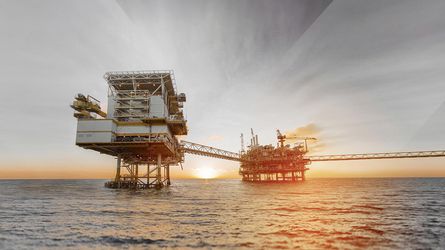
Oil & Gas
You can rely on 60 years of experience in the construction of pumps, packages, skids, and systems for onshore and offshore oil and gas production. Take a look at the information now!
Read more
Advantages of diaphragm pumps in offshore applications:
The stand-by pump can be started directly and remains switched on under suction or discharge pressure in the system.
Onshore disposal is really not a problem because of the storage options. Offshore, HCC is separated from gas and intermediately stored in what are called knock-out drums. Reinjection or transport runs to a central collection point for further pumping onshore and for processing at the knock-out drums.
The quantity in this process is variable; pressure and availability are important aspects: The pump must withdraw a sufficient volume to avoid triggering the LSHH of the knock-out drum, since otherwise production must be stopped.
The mixing of corrosive and abrasive contents means the selection of wetted parts is highly important, especially for valves that need matching hardness and corrosion resistance.
The various components of HCC are listed in the table:
| HCC | Formula | Melting point °C | Boiling point °C | State at 25°C |
|---|---|---|---|---|
| Methane | CH4 | -183 | -164 | gaseous |
| Ethane | C2H6 | -183 | -89 | gaseous |
| Propane | C3H9 | -190 | -42 | gaseous |
| Butane | C4H10 | -138 | -0.5 | gaseous |
| Pentane | C5H12 | -130 | +36 | liquid |
| Hexane | C6H14 | -95 | +69 | liquid |
| Heptane | C7H16 | -91 | +98 | liquid |
| Octane | C8H18 | -57 | +125 | liquid |
| Nonane | C9H20 | -51 | +151 | liquid |
| Decane | C10H22 | -30 | +174 | liquid |
| Undecane | C11H24 | -25 | +196 | liquid |
| Dodecane | C12H26 | -10 | +216 | liquid |
| Eicosane | C12H42 | +37 | +343 | solid |
| Triacontane | C30H62 | +66 | +450 | solid |
Important points for a proper layout:
In addition it includes the following substances: